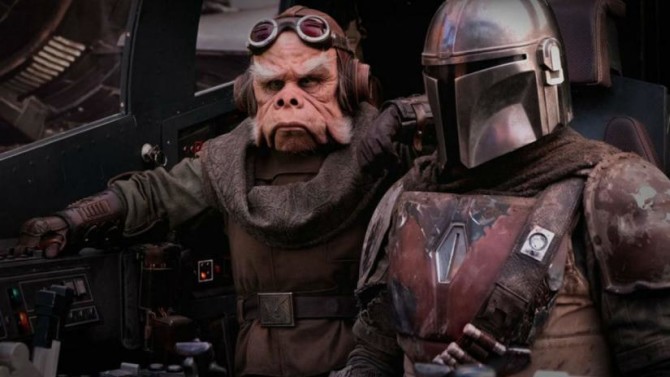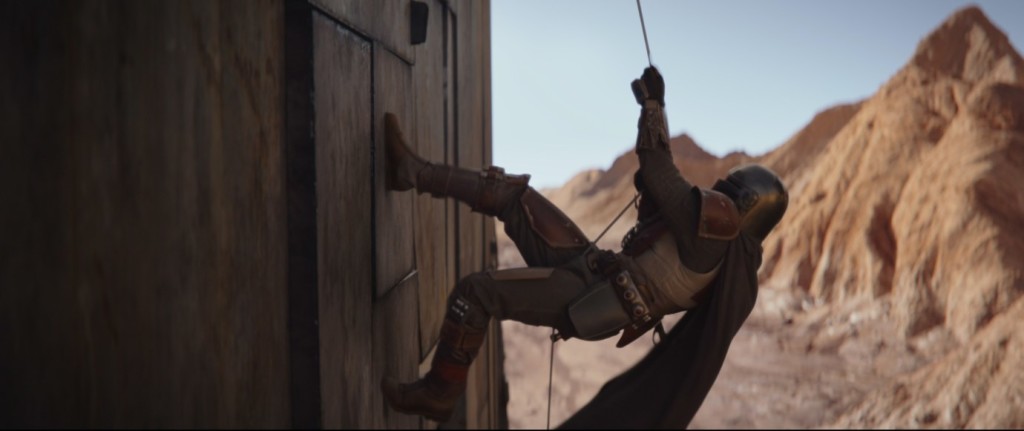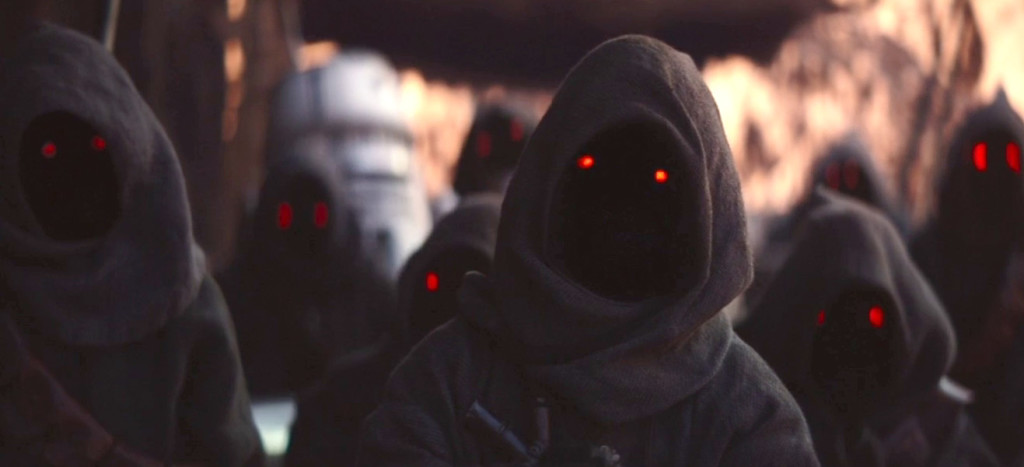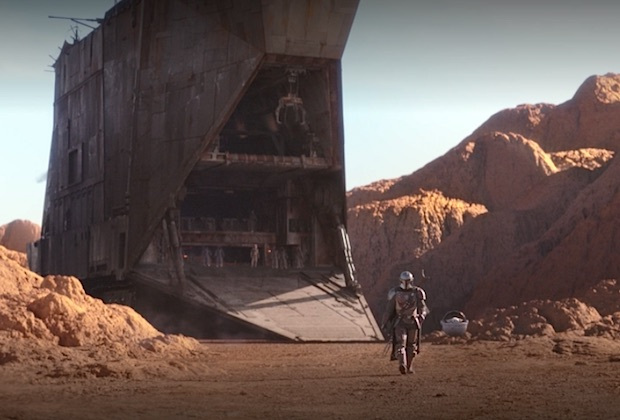Welcome to The Mandalorian Teleplay Chronicles. I will be reviewing every episode of The Mandalorian’s first season with an eye towards helping writers learn TV writing. Whether the show is a breakout hit or a Jar Jar Binks level bust, we’re going to be focusing on how to become better TV writers. Here’s a link to my review of the first episode here.
Genre: Sci-fi (Half-Hour TV Drama)
Premise: After securing his bounty, The Mandalorian readies to head home. But when he finds his ship stripped, he’s forced to find and recover the parts.
About: Disney Plus’s Mandalorian release strategy is shrouded in mystery. The first episode was available 2 full hours before midnight. This latest episode was released 2 hours after midnight. Walt likes to keep us guessing, I suppose. While the first episode of The Mandalorian was directed by Dave Filoni, who was directing live-action for the first time, Episode 2 was directed by Rick Famuyiwa, who directed the underrated Sundance breakout, “Dope,” in 2015.
Writer: Jon Favreau
Details: only 30 minutes long??
***SPOILER HEAVY******SPOILER HEAVY******SPOILER HEAVY***
Baby Yoda.
Is.
The.
Most.
Genius.
Thing.
In Star Wars.
In 25 years.
Actually, I’ll go further than that. “The Child” is the best Star Wars related story since the original trilogy. As you may remember, I did not like the first episode of The Mandalorian. I was so upset, in fact, that I figured the show was doomed. But after getting some rest, I decided to treat The Mandalorian like a playoff series with your favorite team. Got blown out in Game 1. But that doesn’t mean you can’t win Game 2. And The Mandalorian didn’t just win Game 2. It obliterated the competition.
So what changed?
That’s a good question. Obviously, the directing is much better. Rick Famuyiwa understands how to construct a visual narrative much more effectively than first-timer Filoni. A good way to tell if someone knows how to direct is to see how they do in the quiet moments. Good directors can tell a story without the crutch of dialogue. And the first 10 minutes of “The Child” is silent. There’s a great shot in particular where the Mandalorian is in a rocky valley and he senses he’s about to be attacked. The camera slowly pans across his face to build tension right before the attack occurs. You never saw anything like that with Filoni, who you could tell was just putting the camera back on a wide shot in every location in a desperate attempt to make his days.
But the writing is improved as well. Episode 1 was all about setting up the character and the world and, in the process, they forgot about Rule #1 in storytelling: ENTERTAIN. “Entertain” should always be your number one priority as a screenwriter. It doesn’t matter if you write the most seamless exposition dialogue scene in the world. If you weren’t entertaining us in the process, you failed.
The first episode was also clunky. The humor was off-key (that dreadful annoying alien in the first scene). The moments they decided to focus on, like the weird horse-riding scene, were corny. And then when we got to the scene that mattered the most, they rushed through it! If anything, we should’ve been there earlier, prepped for the attack, and then slowly built to the shootout. Which brings up another oddity about this show, which is that the episodes are so short. I would’ve gladly spent another five minutes building up the danger of this town. I don’t know why they’re zipping through these moments. This is TELEVISION. Unlike movies, you’re allowed to sit in moments longer. So I’m not sure what the thinking there was other than Filoni doesn’t know how to direct OR these two episodes were actually a single episode that they chopped up.
But all of that is forgotten after watching, “The Child.” This really was the first Star Wars story since the original trilogy that I felt captured the magic of Star Wars. It follows The Mandalorian, who’s just secured his bounty (Baby Yoda), as he heads back to his ship to, presumably, return the bounty. Except when he gets there, his ship has been stripped apart by Jawas.
If you’re like me, you’re asking, “Wait, are they on Tatooine?” But it turns out they’re on Avala-7, a planet in the Outer Rim. This is where Filoni comes in handy. He knows all the planets in the galaxy and he also knows what creatures are on those planets. So I’m sure, as Favreau was writing this episode, he asked Filoni, “What kind of aliens would the Mandalorian encounter on Avala-7?” Filoni immediately shot back, “Well you know Jawas can be found on any dusty planet in the Outer Rim.”
This led to an extremely fun sequence where the Jawas hurry off in their giant sand crawler and, just like in the old Western movies, the Mandalorian hops on the “train” and tries to make his way inside, only to get attacked at every step. The best part about this sequence is that Baby Yoda is hovering along behind him, casually watching the events unfold with childlike curiosity.
After getting booted off the crawler, the Mandalorian heads back to his buddy, Nick Nolte Alien, who tells him they can barter with the Jawas. So they go to meet the Jawas, who, after several rejected trade scenarios, offer the ship parts if Mandalorian gets them “the egg.” The egg? What is the egg? Cut to a cave where a big beast most definitely lives and now we know why they’re willing to give so much for this egg. Getting it will be impossible.
The Mandalorian fights the rhinoceros-like creature, but only wins because Baby Yoda uses the force at the last second to stop it. This allows The Mandalorian to kill the beast and retrieve the egg for the Jawas…. At which point the Jawas break open the egg in celebration and start eating its gooey insides. That’s all they wanted this whole time. Was a yummy treat. It was hilarious. This allows the Mandalorian to put his ship back together and off he and Baby Yoda go. The End.
Okay! Let’s talk TV.
In the pilot episode of a television series, you’re hamstrung by the fact that you have to set up a lot of things. The good news is that when you get to the second episode, much of that weight has been lifted. You’ll still need to set up things (new characters and such) but for the most part, you’re released from this burden. What that means is that your second episode needs to be about WHY THIS SHOW IS AWESOME. Give us a great story in the second episode – something that highlights why this specific TV show concept is so great. And that’s exactly what The Mandalorian does. This second episode is ALL STORY.
For those wondering how to create a story for an episode, one of the easiest ways is to introduce a PROBLEM. Because then you have something to do for the next 45 minutes: Show your hero trying to solve the problem. Now in more conventional TV episodes, you’ll be following three main storylines. So you’ll need to come up with a problem for three different characters. But The Mandalorian is unique in that it’s only following a single character. So they only needed to come with one problem. And that problem was that he couldn’t leave the planet because his ship was stripped.
From there, it’s pretty standard storytelling procedure. Your job is to create DOUBT that the hero will achieve his goal. Favreau does this immediately when The Mandalorian runs after the sand crawler, tries to infiltrate it, only to be defeated by the Jawas, which there are too many of.
This leads to a broader discussion about heroes in stories. It tends to be more interesting when the hero isn’t superman. A lot of people went into this series believing that this Mandalorian guy was going to be bad-a$$ and take out everyone with a glance. But it hasn’t been that way. He’s not perfect. He messes up. The key factor to pay attention to here is that if he’s not perfect, there will be MORE DOUBT. And that’s what you want. Because think about it. If you know he’s going to win, how compelling is that?
And you see how this pays off when your character goes up against the bigger problems. We saw this guy lose against Jawas. 3 feet tall Jawas! So when he’s fighting the egg beast, we’re genuinely unsure what’s going to happen. And it turns out he doesn’t defeat the beast. He needs help from Baby Yoda.
That’s what I liked about Episode 2 the best – it’s Back to Basics storytelling. There’s no trickery or overly complicated nonsense. It’s straight-up Hero has a goal and encounters obstacles along the way. If you master that simple formula, you can write a lot of great TV episodes. The only difference you’re going to find if you get staffed on a “normal” show is that you’ll have to balance A, B, and C storylines. That gets trickier. But you’re essentially doing the same thing. Each of the three storylines should have a clear goal and then a number of obstacles that get in the way of achieving that goal. Also, your A story (which will follow your biggest 1 or 2 characters) will have the most amount of screen time, B story the second most amount of time, and C story, obviously, the least amount of time.
“The Child” has reinvigorated my enthusiasm for this series. What’s so great about Baby Yoda is that it’s the first Star Wars mystery nobody knows the answer to. We know Rey is either connected to nobody, Luke, the Emperor or the Solos. We know Kylo will get redeemed and probably die. The internet has kind of destroyed a lot of the fun of Star Wars in that way. But Baby Yoda has stumped them and I believe that’s a big reason why this series is so exciting. Nobody knows where it’s going to go. And that brings me back to the feelings I had between Empire and Jedi where the only way I was going to find out how this ended was to see the final movie.
And by the way. I would be ALL ONBOARD for a Rick Famuyiwa Star Wars feature. Put this guy in charge of the Kevin Feige Star Wars project and I’ll be the first to commend the choice. He did an excellent job.
[ ] What the hell did I just watch?
[ ] wasn’t for me
[ ] worth the stream
[x] impressive
[ ] genius
What I learned: Have your character fail early to create doubt later. When your character goes up against the big bad villain, we’ll be more invested if we SAW HIM FAIL EARLIER. Had the Mandalorian wasted the Jawas easily, we would’ve been too comfortable when he fought the beast. The fact that he lost increases the doubt-factor that he’ll be able to beat this thing. And fights/battles are always more compelling when we have serious doubts about our hero winning. This goes all the way back to the original Star Wars when Luke Skywalker is in that trench. We’ve just seen 10 other much more seasoned pilots die. How is this farm-hand who’s in his first battle ever going to figure it out?





